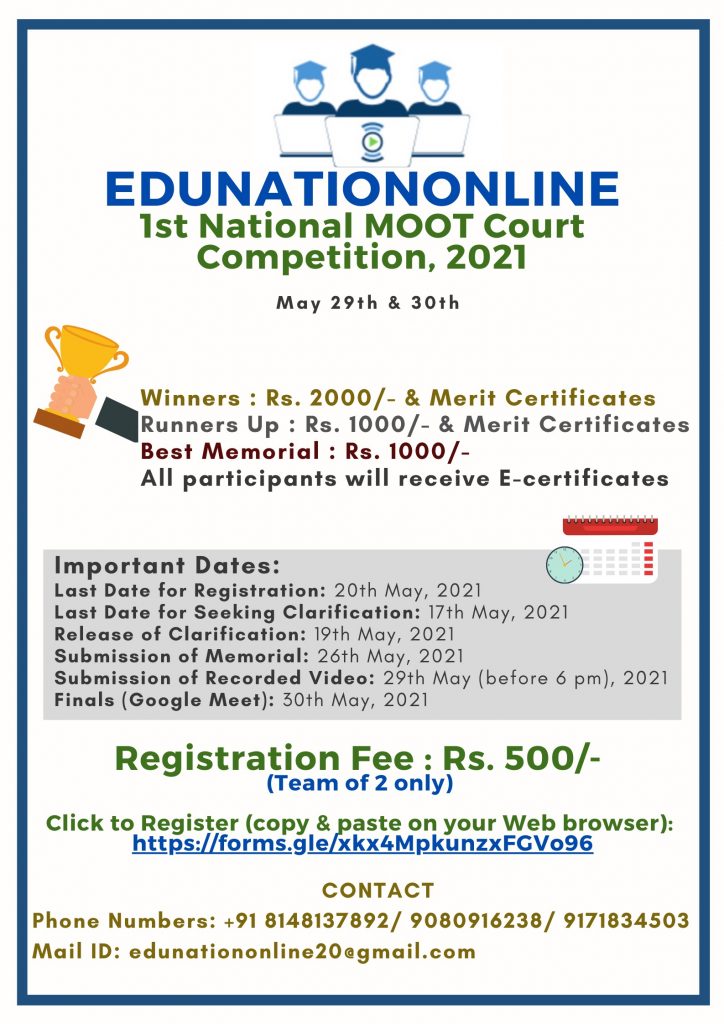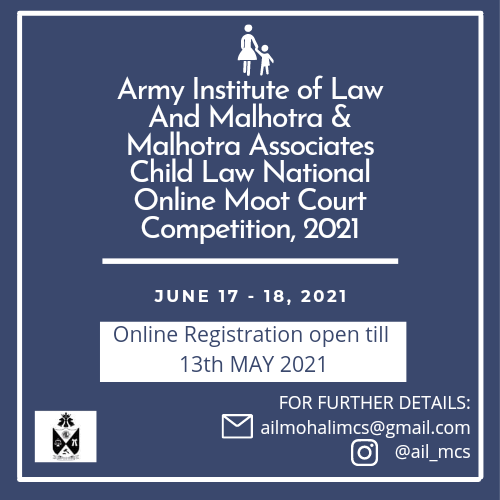This article is written by Bhargavi Nimje, a 1st year student at Firodia Law College, Pune. This article discusses the new regulations imposed by the government on OTT platform, social media and digital media and the issues with new regulations.
INTRODUCTION
Whether it is, social media or Over The Top (OTT) platforms, they have been hitting the headlines for their content or misuse for a long time. OTT platforms are replacing traditional media. Regulations of OTT platforms and social media has been a widely debated topic over the regulation of content and interference with privacy rights. Government has been contemplating the idea of a regulatory body for OTT platforms, digital media. Citing the reason of public interest, the government has decided to frame regulation for Over the top (OTT) platforms, digital media and social media.
Why the Need Felt
In the last few years, many controversies have come up regarding content on OTT platforms and inciting violence through social media. Government claimed that OTT platforms do not have censorship and so any content was published on platforms that was hurting viewers sentiments as in the case of ‘Tandav’ or depicting the particular city in a wrong way as in the case of ‘Mirzapur’ To curb the incidents of violence, assassination of character, prohibiting spreading of false message, protecting sentiments of viewers, government decided to have censorship. Defaming, harassing, stocking others on social media are some of the crimes which go unpunished. To bring an end to these issues, the government decided to have stricter regulation. However, a big push came when there were violent incidents at the Red Fort on Jan 26, 2021 and certain accounts were removed from social media on the ground that these accounts were involved in inciting violence through social media. The government felt the need to have stricter regulation for addressing such issues.
Prior to Regulations
There was no such rule for OTT platforms and digital news media. Whereas, for movies, The Central Board of Film Certification (CBFC), a film-certification body, reviewed the content before the release of a movie. There were no regulations on broadcasting and transmission of content on OTT platforms. OTT platforms were under the purview of the Ministry of Electronics and Information Technology but didn’t have any rules. After a lot of criticism OTT platforms are brought under the purview of the Information and Broadcasting Ministry. To curb the issue of content and to avoid coming of OTT platforms under Information and Broadcasting ministry, Internet and Mobile Association Of India (IAMAI), a representative body of OTT platforms proposed the self regulatory model ‘Code of Best Practices for Online Curated Content Providers’ which was signed by major OTT players like Netflix, Amazon Prime, but Information and Broadcasting ministry has not agreed to this model stating that IAMAI wanted to address grievances internally and there was no appeal mechanism which wasn’t acceptable to the government.
When it comes to digital news media, the government has claimed that many digital news media don’t have even basic information on their office address. To map out the digital news media, guidelines are required.
For the regulation of social media, there were certain sections under IT Act 2000, but they were applicable to very specific cases of data breaches and privacy. Also, there was an issue with some ‘terms’ which was not defined clearly and can be interpreted in various ways.
New Regulation
Social Media
The Information Technology (Intermediary Guidelines and Digital Media Ethics Code) Rules, 2021 regulates social media, digital media and OTT platform. It also envisages a category of significant social media intermediaries for social media platforms. Intermediaries that host user generated content have an immense role to play as per the new guidelines. The government has classified intermediaries into 2 categories, i.e., social media intermediary and the significant social media intermediary. Social media intermediary means a provider who allows its user to interact online with other users using the providers’ platform. Platforms with over 50 lakh registered users are to be considered as ‘significant social media intermediaries
The social media intermediary should have
- Grievance redressal mechanisms for receiving and resolving complaints from users in which a grievance officer had to deal with complaints, and must acknowledge the complaint within 24 hours, and resolve it within 15 days of receipt.
- If the court or government authority passes an order to remove a prohibited content from the intermediary’s website, the said content shall be removed within 36 hours.
When it comes to significant social media intermediary, they have an additional obligation. The significant social media intermediary have to
- Appoint Chief Compliance Officer residing in India who will be responsible for ensuring platform’s compliance with the rules.
- appoint a nodal contact person for 24×7 for coordination with law enforcement
- Appoint a resident Grievance Officer to handle the grievance redressal Mechanism.
- To know what the situation is, the significant social media intermediaries will need to publish a monthly report mentioning the details of complaints received, action taken and the details of contents removed proactively.
- They have to identify the first originator of the information of the mischievous tweet or message and have to disclose the name upon being asked by the court or by a government authority. However, disclosing of name is required only for prevention, detection, investigation, prosecution or punishment of an offence related to sovereignty and integrity of India, the security of the State, friendly relations with foreign States, or public order”.
Intermediaries are protected by Section 79 of the Information Technology Act, which provides a “safe harbour” to intermediaries and exempts them from liability for the actions of users if they adhere to government-prescribed guidelines. If an intermediary fails to observe the rules, they will be liable for punishment “under any law for the time being in force, including the provisions of the IT Act and the Indian Penal Code
OTT Platforms, Digital Media
Centre had amended (Allocation of Business) Rules, 1961 to bring OTT platforms, digital news under the purview of Information and Broadcasting
The Information and Broadcasting Ministry has introduced a 3-tier mechanism for OTT platforms and digital media. Wherein,
- Level 1, This would be a self regulating body by the publisher, where the publisher shall appoint a Grievance Officer who would solve a grievance regarding the Code of Ethics in 15 days.
- Level 2 would be an independent body by the publisher. This would be headed by a retired judge of the Supreme Court or a High Court, or any independent eminent person from the field of media, broadcasting, entertainment, child rights, human rights or other relevant fields. They would ensure that Code of ethics are followed and would address the grievance which has not been solved within 15 days.
- Level 3, The Information and Broadcasting Ministry will establish an inter-departmental committee, the committee will have representatives from different Ministries of Government. They would deal with published offensive content, where the committee has the power to delete or modify the content. It may also block the published content, in case of emergency.
Code of Ethics
According to Code of Ethics given in the rules, digital news media has to follow Norms of Journalistic Conduct of the Press Council of India and the Programme Code under the Cable Television Networks Regulation Act. Code of Ethics also states that publishers of online-curated content have to classify their content into age-based categories.
5 categories on the basis of age
- U suitable for all ages
- U/A 7+ suitable for age 7 and above and below age 7 only with parental guidance
- U/A 13+ suitable for age 13 and above and below age 13 only with parental guidance
- U/A 16+ suitable for age 16 and above and below age 16 only with parental guidance
- A restricted to adults
Parental locks feature should exist for content classified as U/A 13+ or higher and reliable age verification mechanisms for content classified as ‘A’
Issues with New Regulations
Imposing regulation has sorted out some issues. Classification according to age is a good initiative that would restrict children from watching adult content. Inciting violence through social media may reduce. Although, some new rules have brought with them new issues.
- Right to privacy, which is a fundamental right, has been compromised. To track the ‘originator of the message’ end-to-end encryption protocol will be broken.
- Right to speech and expression through social media is a new medium of expression. If people won’t express their views, appropriate law won’t come up and this would create issues within society.
- When a certain section of society gets hurt by the content shown, the audience starts demanding Boycotting of that respective OTT platform where the wrong content was exhibited. After new regulations, we can be optimistic that such happenings won’t come up as new regulations are up. Boycotting would result in economic losses.
- We can notice that almost all news channels do speak in favor of the ruling government in the country wherein only a few viewers could understand the exact scenario. Digital news media, which usually are unbiased and brings out the truth will now be restricted from exhibiting certain news. The government has not accepted the proposal of IAMAI stating it lacked an independent body, but even after imposing regulation, it seems as if there are government regulations rather than independent body regulation. The final tier of OTT regulation is about government regulation where the government has emergency blocking power when delay is not acceptable. There are high chances that content criticizing the government will not be allowed to get released, criticism won’t be allowed as the government being the final tier won’t allow such content. Criticism is equally important, though.
Through entertainment mediums let people decide what is right. Exhibiting only the positive side won’t make a country progressive. The people should know both the sides to make an informed decision.
Reference
https://www.indiatoday.in/magazine/up-front/story/20201130-a-digital-disquiet-1742322-2020-11-20
https://www.google.com/amp/s/blog.ipleaders.in/overview-ott-regulations-2021/amp/
https://indianexpress.com/article/explained/social-media-digital-news-media-over-the-top-ott-content-providers-guidelines-7205053/
Latest Posts
- Job opportunity at EXO Edge, Sahibzada Ajit Singh Nagar, Punjab, India: Apply Now!!
- Internship opportunity at Vishwas Advisors, Kalyan, Maharashtra, India: Apply Now!!
- Internship opportunity at Kulfi Collective, Mumbai, Maharashtra, India: Apply Now!
- Job opportunity at The Neotia University, Diamond Harbour, West Bengal, India: Apply Now !!
- Job opportunity at Morgan Stanley, Mumbai, Maharashtra, India: Apply Now!!
- Job opportunity at VISA INTELLIGENCE CONSULTANCY LLP, New Delhi, Delhi, India: Apply Now!!
- Job opportunity at Amazon Web Services (AWS), Gurugram, Haryana, India: Apply Now!!
- Job opportunity at Stelcore Management Services Private Limited, Mumbai, Maharashtra, India: Apply Now!!
- Job opportunity at Zscaler, Sahibzada Ajit Singh Nagar, Punjab, India: Apply Now!!
- Job opportunity at Irish Expert, Delhi, India: Apply Now!!
- Job opportunity at UnitedLex · Gurgaon, Haryana, India: Apply Now!
- Internship opportunity at Vineforce · Nabha, Punjab, India: Apply Now!!
Archives


